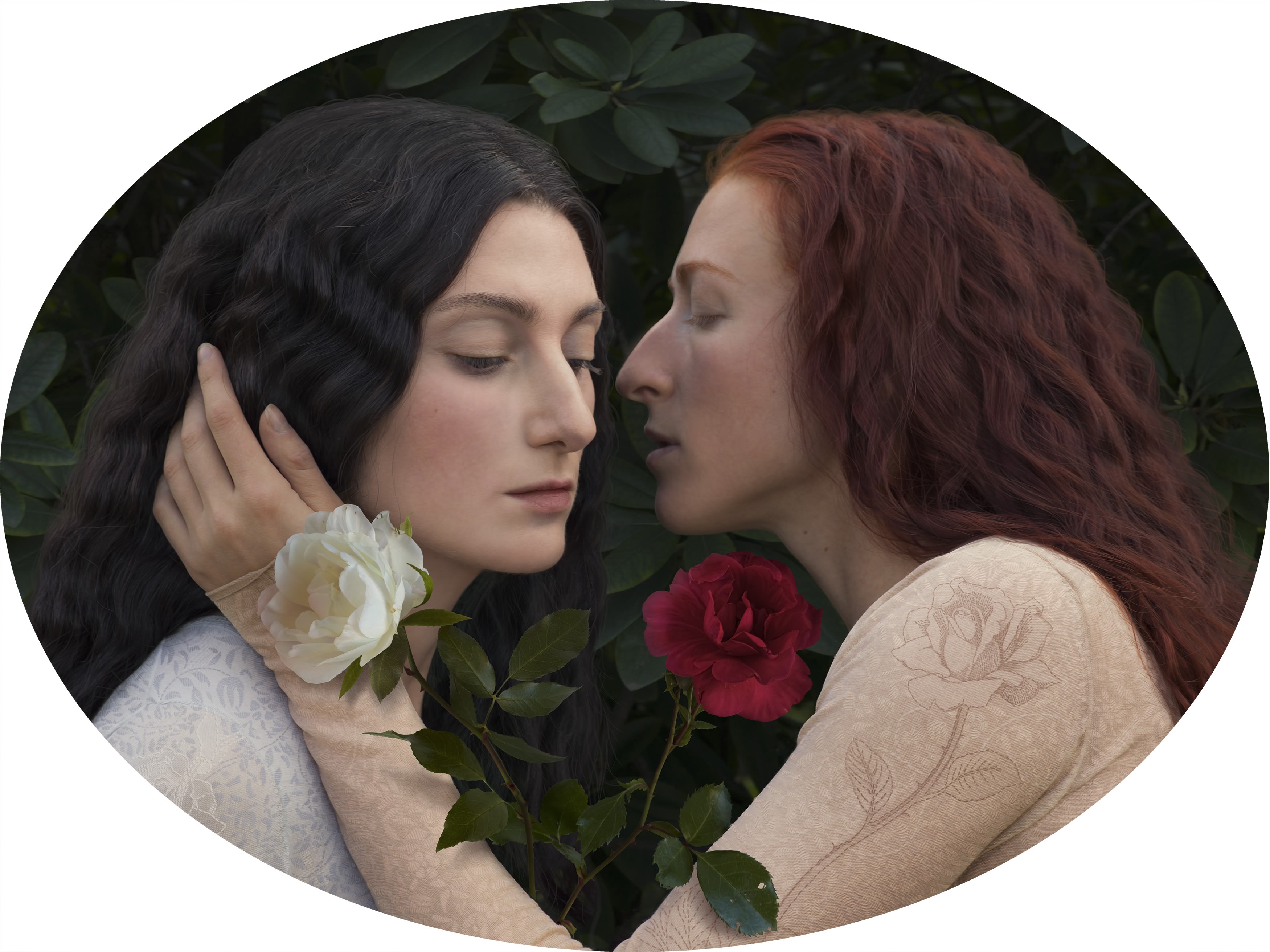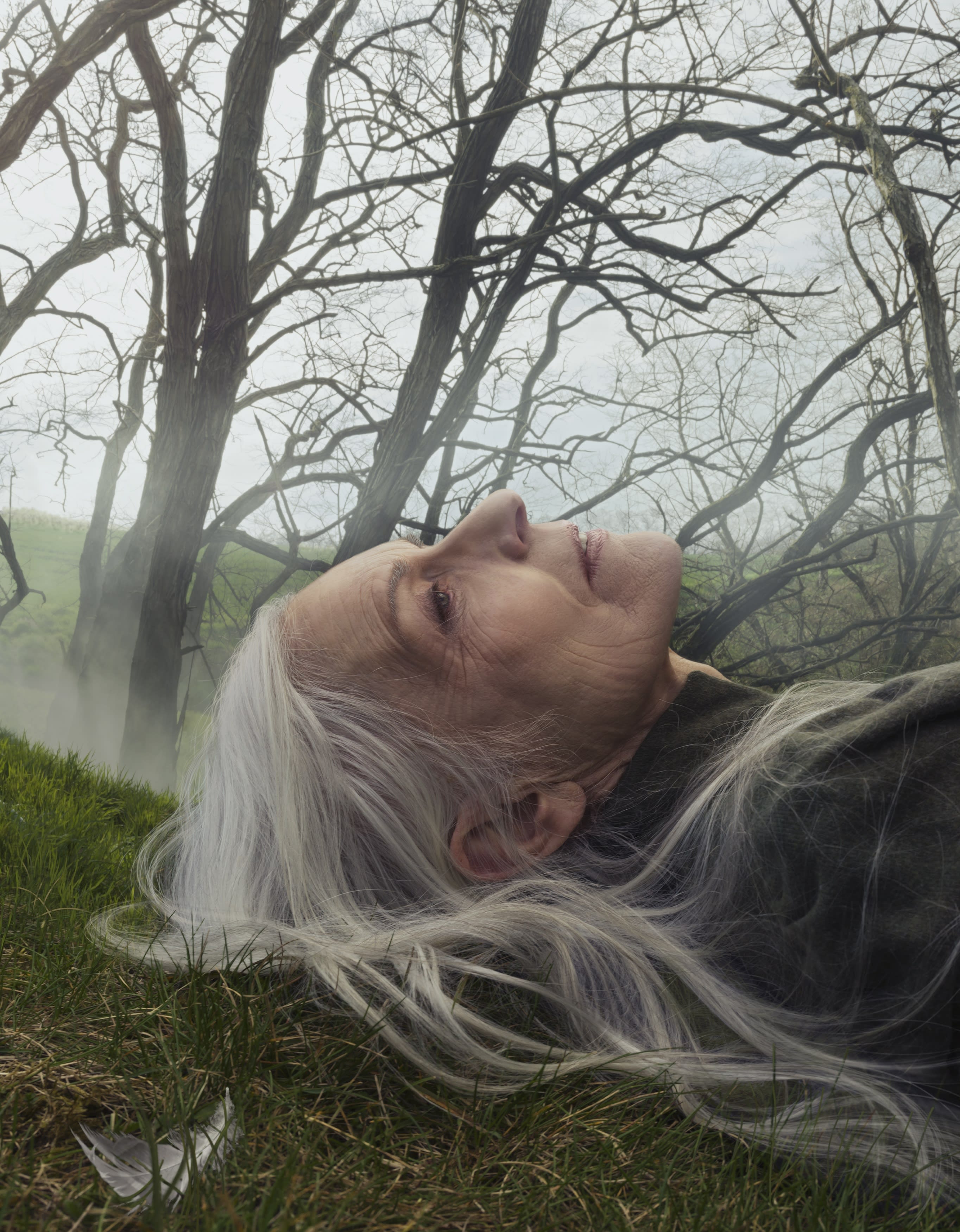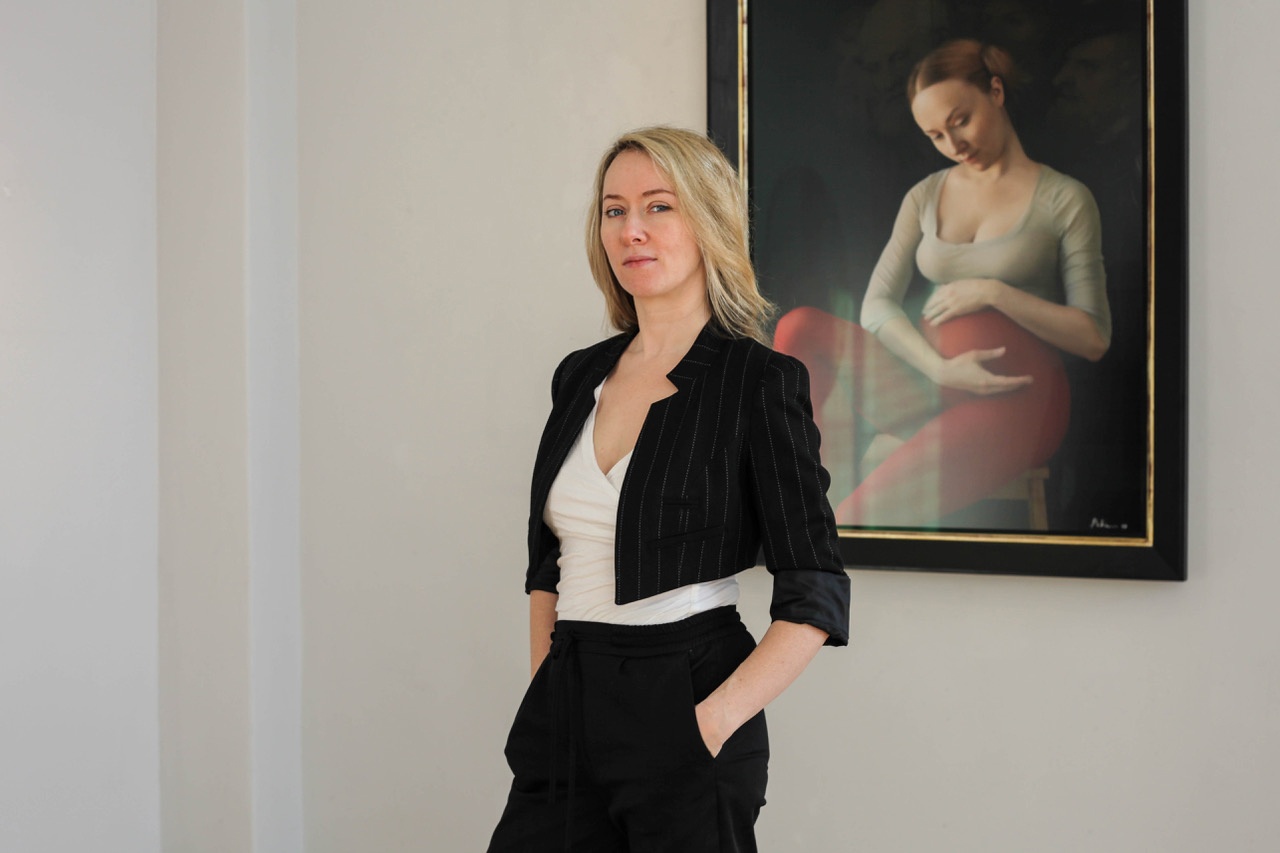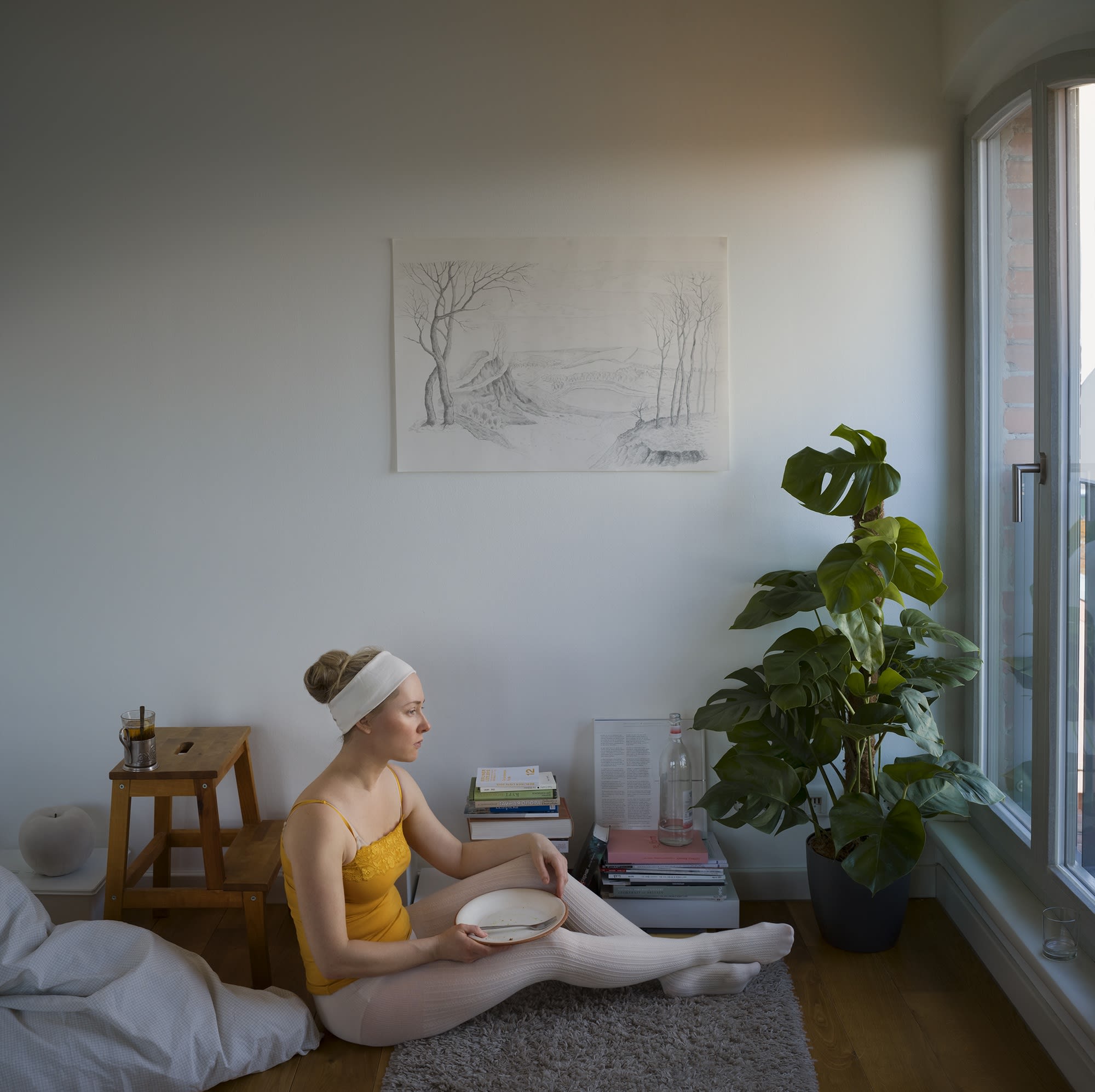Interview with Katerina Belkina, a German mixed media art creator and Hasselblad award winner

Katerina Belkina is a German mixed media artist whose Dutch golden age-like style, amazing palette and emotional set of topics are absolutely recognizable. Having had a lot of international exhibitions and received prominent awards she thinks that there are still a lot of goals ahead of her. .ART talked to Katerina about the life in Samara and Berlin, gender and sexuality, the philosophical meaning of fairy tales and about why art and happiness never go together.
Tell us about your recent project.
This is a very important project that changed me a lot. It started 3 years ago when I won the Hasselblad international photography award. As a winner I was obliged to make a series of works for 3 months. This was unthinkable for me. I am not a photographer, but a mixed media artist who combines photos and computer painting. It takes me from two weeks to a month to make just one work! I decided to do what I can to meet the deadline and then bring the project to perfection. During the first months the concept of the project was born, I understood what I wanted.
Why did you decide to choose fairy tales as the main topic?
I have always been attracted by the fantasy world, having a very rich imagination in my childhood, I lived with games and fairy tales. There are realists, and there are storytellers, I am definitely the latter. I love animation, I watch a lot of cartoons, I'm a fan of anime. It's only logical that eventually I came up with this project. In fact, I've a strong desire to work with fairy tales and use motifs from the European folklore for a while, when I was living in Russia. So, three years ago I realized that this was the right time. Due to time constraints, I chose only 12 fairy tales of the brothers Grimm.
Which ones?
At first, I wanted to use lesser known fairytales. But then I was told by the director of the museum, who had offered me the exhibition, that it was better to choose famous ones - the experience of recognition is important for people. These are of course «Snow White», «Cinderella», «Sleeping Beauty». There are also absolutely wonderful «The twelve brothers», «The seven ravens», «The Blue Light», «The Shoes That Were Danced to Pieces». One of my favorite books when I was a kid was «The Fairy Tales of the Brothers Grimm» with the fantastical mystical illustrations by Olga Kondakova, a famous Soviet illustrator. These pictures had a huge impact on me in terms of technique, their sensation, their mood - which are all still deeply within me.
By the way, some of the fairy tales in my collection are not very common even in Germany. I was surprised when the German public did not recognise them, only the most basic ones. Everyone asked: "What is it?" That's an interesting fact. ![]()

What is the concept of the project as a result?
I wanted to get away from popular stereotypes and avoid showing how Cinderella lost her shoe or how Snow White ate an apple. In my mind I had an image of interaction between characters with the local nature. I wanted to create an atmosphere in which the viewer would be able to imagine how all these incredible magical incidents and reincarnations would occur against the background of nature.
Secondly, it was important for me that the characters of fairy tales have something in common with us, modern people. Fantasy is fantasy, but we should see some kind of reality through it. In addition, technically, photography is the basis of my creativity, and this media is totally about the world's real moments.
At conceptual level, this combination of fictional and real is also visible. Each hero goes, roughly speaking, from point A to point B in order to achieve something desired, to accomplish his goals and find something important: his own happiness, a treasure, a magical object. Often it's not even clear what he's looking for, but it will be clarified as he goes along. He can also be reincarnated or become a better person along the way. Thus, all of us are very similar to these characters. We are all seekers of truth, happiness, we are all travelers. Therefore, the first part of my project is called «Dream Walkers».
The second part of your project is called «Magic Things». What is it all about?
There are magic items in every fairy tale. The catalysts which start magical reincarnations, but not necessarily positive ones. It could be Cinderella's shoe. And it could be the apple of the Snow White's Stepmother. I think this was a great idea to add objects into the project. It's not just a series of graphic works anymore, but an atmospheric exhibition where the viewer can fall into this magical space, see and literally touch the magic. ![]()

In an unedited version all these tales are pretty creepy. Is this side somehow reflected in your artworks?
The world itself was creepy at that moment. These stories simply reflected reality. I don't have horror and blood there, but there are some kind of hints on drama. You know, when you watch a movie and reach an exciting moment: nothing has happened yet, but you know it will.
Suspense!
Yes. I didn't want to portray Snow White lying poisoned in a coffin - this would be such a stereotype. Instead, I show the title character - Stepmother, who stands with the apple. I used facial expression, palette and composition to show that she was a person in doubt. She had a true storm inside, because even the most ruthless person has doubts when considering extreme measures.
The apple itself I associate with the heart. I show the empty coffin of Snow White and put an apple in it just at the place where the heart is. It's not Snow White's heart though, but Stepmother's: it is beautiful, cold and poisoned. She understands that her act against Snow White is very likely to lead to her own death, but in the end she sacrifices her heart - «neither you will live nor me».
One more horror hint: one of Cinderella's shoes has a red insole. According to the original fairy tale, the Stepmother tried to pull the shoe onto her daughters' feet cutting off their heels and toes because the feet were too large for the shoes. So, this is a symbol of a sacrifice made in vain. ![]()

Do you see a space for miracles and magic in the everyday life?
Yes, I tend to ascribe some kind of mysticism to life in general. Until a certain age I maintained those beliefs. And then I became a fatalist and a realist in some respects. In general, at some point you lose your faith, probably everyone goes through it. But you lose it in order to find it again - in a new quality.
What is divine or mystical? There are always things around us that seem very suspicious. Accidents are too regular. And at the same time, the world is an amazing system, very complex, and something or someone probably controls this system. It is very difficult for us to accept the idea that the system is functioning by itself. Some people absolutely reject the idea of a creator, but the disbelief is also a kind of faith.
Why do you need a website while having popular accounts on social media platforms?
Website is a foundation of media presence. This is something stable that can be controlled only by me. The only person who makes decisions here is me: on how it looks, what's inside and how everything is structured. On social media with one "wrong" picture you are banned. Data can be taken from your account without your permission, your privacy can be easily violated. Using a website is like having your own office, while using social media is like coming to a cafe every day to work for a bit. .ART is a truly unique domain. At first I tried to buy belkina.com, but it was already taken. Luckily for me, .ART appeared. It turned out to be beneficial from all points of view. As an international artist I consider it of importance not to be limited by «geographical» domains. .ART is neutral in this respect and, at the same time, it is professionally oriented. What could be better? I am one of .ART's earliest adopters as I wanted to snatch it as soon as it appeared.
Who made the most impact on you as an artist? You have some works dedicated to Degas, Gauguin, van Gogh. Who else?
I have a series of dedications to all my favorite artists. The largesеt influence is that of my mother: she gave me the basic artistic education. Another thing is the Northern Renaissance, the Netherlands - Rembrandt, Vermeer. I have a feeling that I was a Dutch painter in one of my past lives.
I cannot help but ask about the concept of feminine and femininity in your work as one of the main topics. You once said that modern culture is not interested in the woman as a mother anymore …
The main role of a woman was strictly determined for a long time. In the 20th century there was a sexual revolution and things went in the opposite direction: woman as a lover. Chastity, modesty, motherhood - everything was rejected and if you weren't sexual you weren't a woman. And now we logically come to the next stage: a woman is a person and not an object; she should not be conditioned to be sexual, "feminine", a mother or anything else. She is the one making decisions.
Do you consider yourself a feminist?
Yes, definitely. I stand for «healthy» feminism, without extremes. Equal rights, equal possibilities. ![]()

What was missing in Russian society and what did you find hard to endure?
Russian society is patriarchal. In Moscow we can see a different situation, especially when we look at young people. But if we move deeper into the country all the values will be the same as they were in the patriarchal past. A little example: I left for Germany with my daughter, who is now 22 years old. Almost 80% of her friends who remained in Russia are now married. Some of them already have children. And every time those friends ask my daughter about marriage and children, they are very surprised that this is not her priority. This pressure still exists in Russia.I don't feel such a pressure in any respect in the Western society. For example, if a woman doesn't want a career, if she is just a wife and a mother, it is viewed as her personal choice. People can live for their hobbies, their career, their family. Whatever.
And what is the difference between being an artist in Russia and in Germany?
The difference is huge, as it turned out. Here you can be an artist of the world, expand your boundaries, participate in international projects, exhibitions. It's easier to move, to travel, to send your work somewhere. This was a real problem and a whole story to send an artwork from Russia to Europe.
Art is developing in Russia as well, but this development in the majority of cases is isolated. When I see discussions of famous Russian artists on Facebook, all of them are tied to local events and exhibitions. ![]()

Katerina Belkina By Beatrice Grundheber
And in terms of censorship? Although you, probably, never had to deal with it…
Actually, I did. It was when I was preparing a project on the subject of a woman - feminism, emancipation. I wanted to make photos of a group of women dressed only in their underwear in a tram depot in Moscow. I tried to get permission to take pictures in the tram park, but didn't succeed. They even made some threatening calls promising that I would get in trouble. It was right after Pussy Riot's political performance. Eventually we found a way, but it was a strange experience. I don't feel connected to the world of politics at all.
What are the main components of success? Are you a successful person?
Personal qualities, hard work and good luck. We can see luck as a personal quality. It is a talent - to be in the right place at the right time and react quickly. Generally, successful people are the ones who clearly see a trajectory for themselves. And work constantly in that direction.
I don't know if I can consider myself to be a successful person. There is still a lot of work ahead. ![]()

Blitz
An object that you can't live without.
My iPhone
A character trait you value most highly?
I admire intelligent people. Intelligence in the «Russian» meaning of this word. This is not only intellect, but also some moral qualities. When someone can move see beyond their interests. It is also about emotional intelligence…
Your favorite book?
That is always the book I am reading at the moment. Right now it's "The History of the Rembrandt Country" by Olga Tilkes.
Favourite colour?
In my works I use two colors more often than any others. Blue and red.
A person (already dead, alive, or fictional) who had the most impact on you?
My parents. My mother is an artist, my father is a mathematician. Such a balance, yin-yang. Artistically - David Lynch and Hayao Miyazaki.
If you had a minute face-to-face with Salvador Dali, what would you say or do?
I would just chat with him. About creativity.
What is your idea of happiness?
Happiness is an illusion, something that exists somewhere in a parallel universe. It seems to me that a creative person cannot be happy. An artist is always emotionally hungry, he is not satisfied. And creativity is not happiness, but pain and agony with rare moments of enlightenment.







